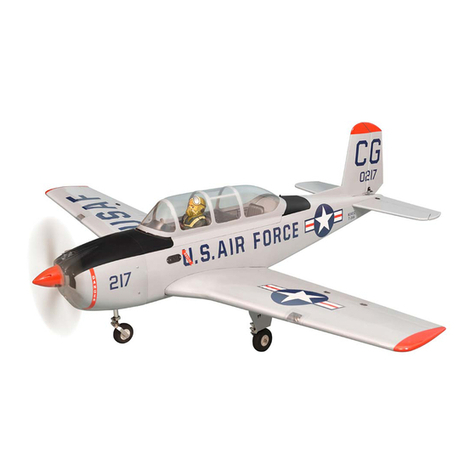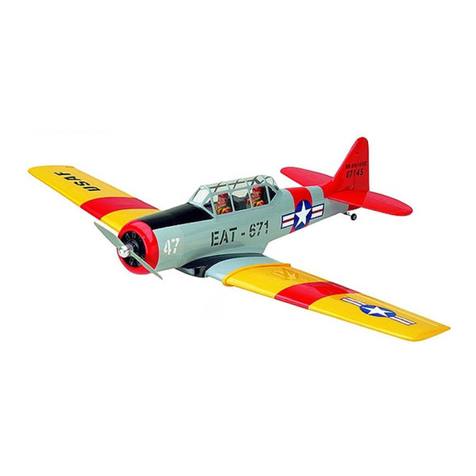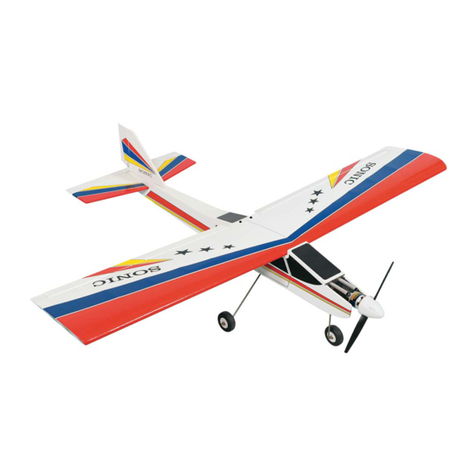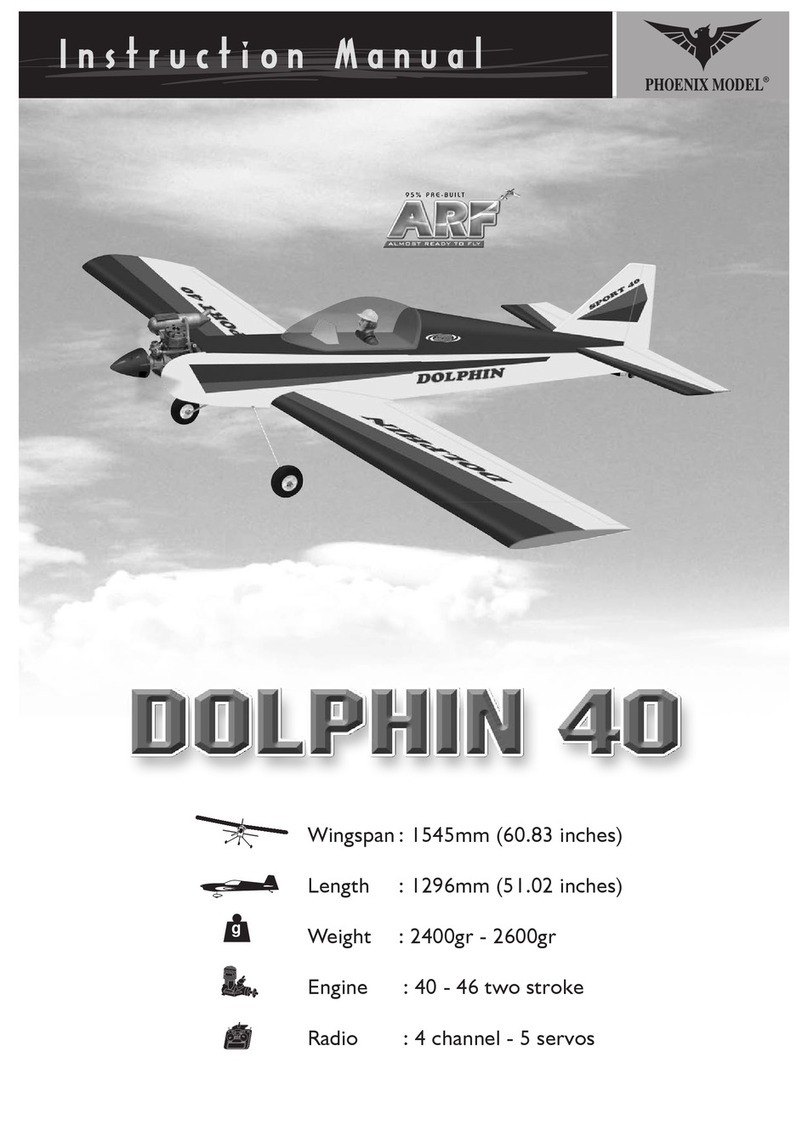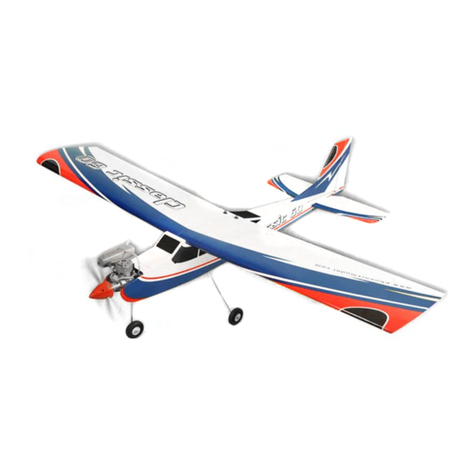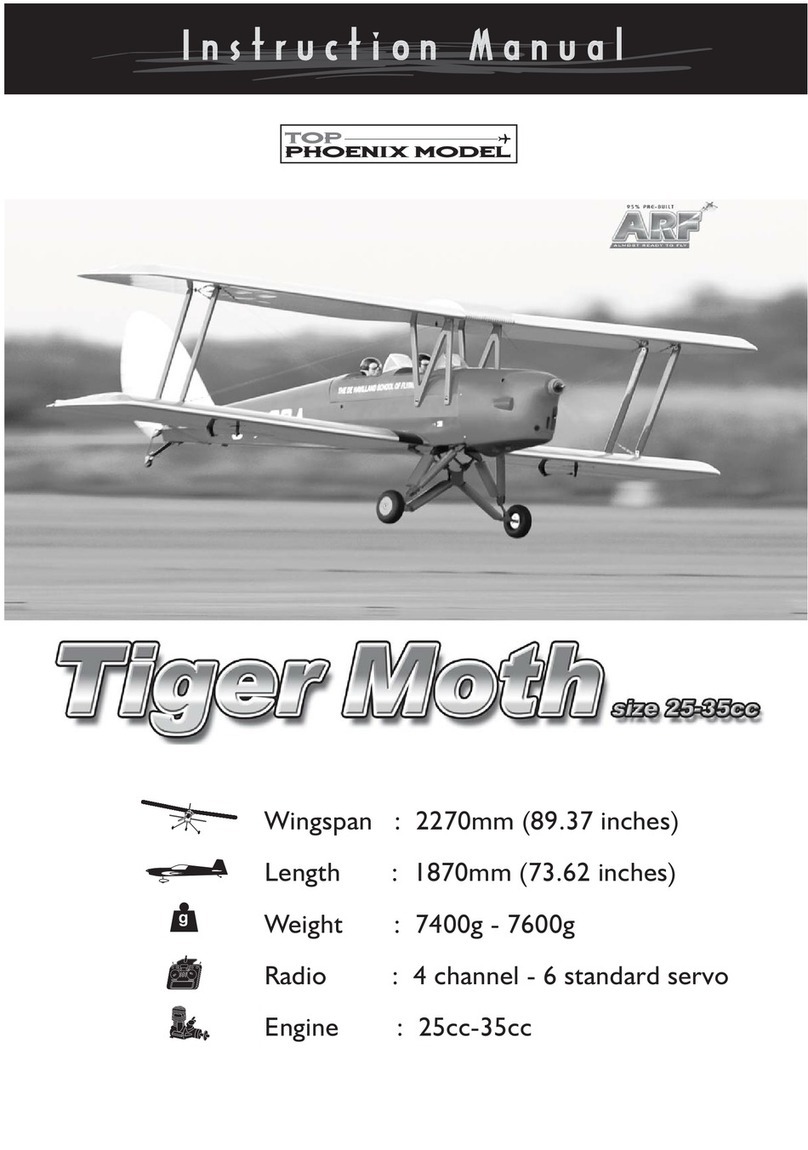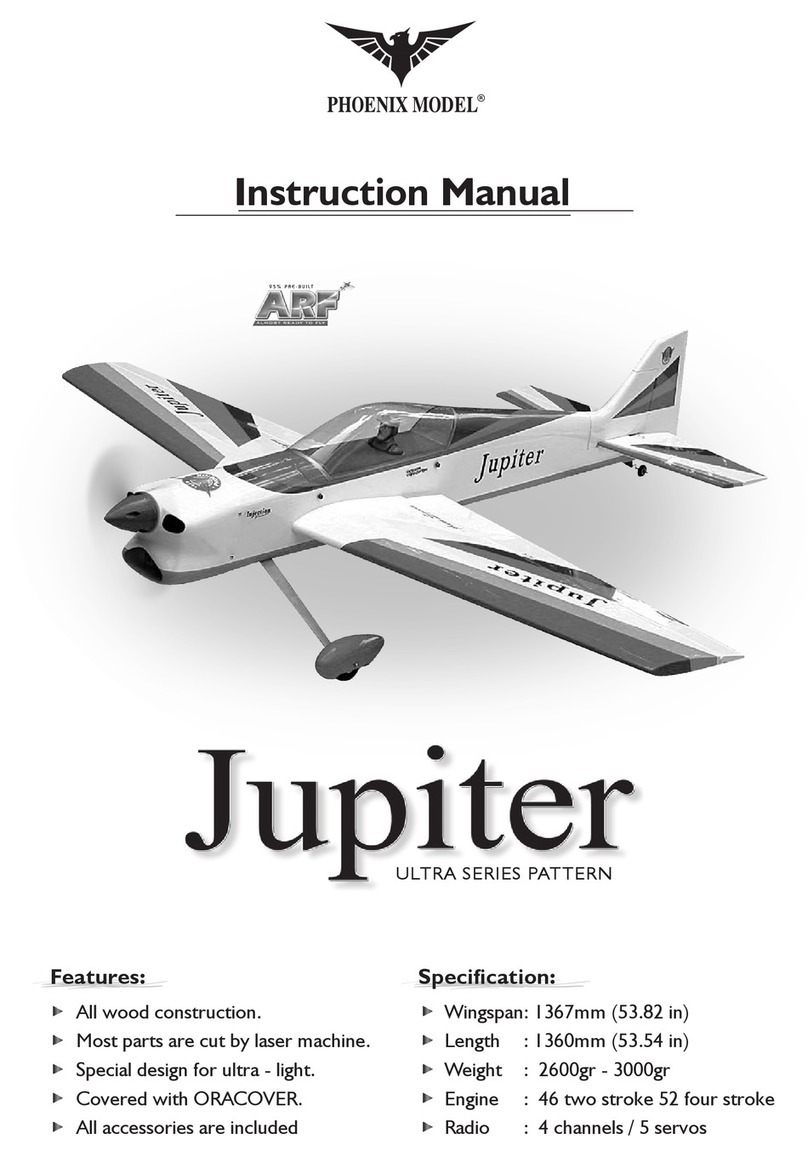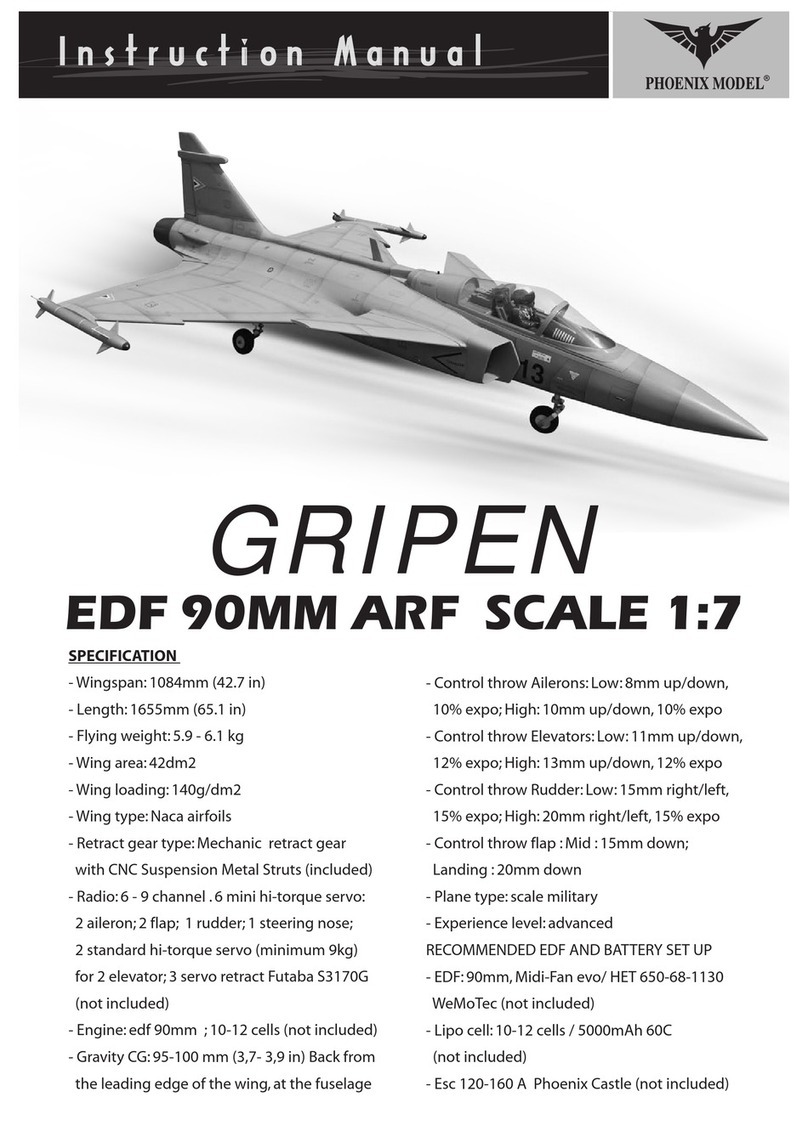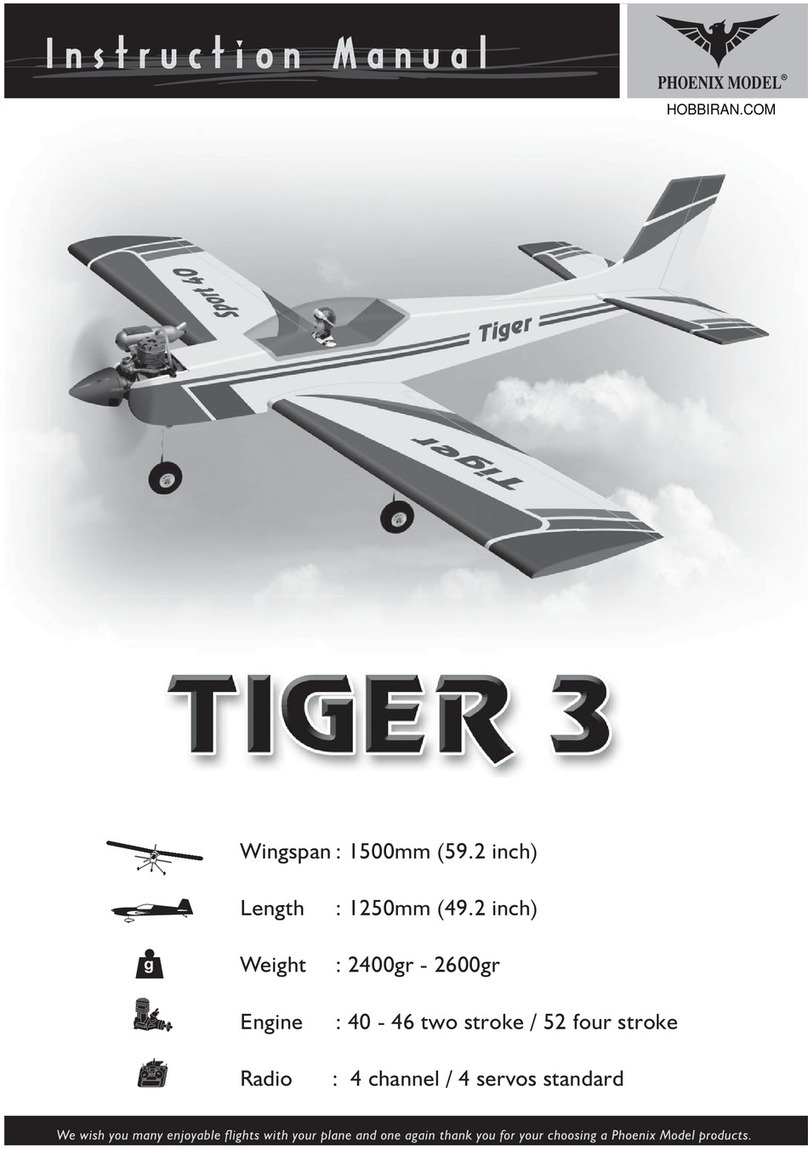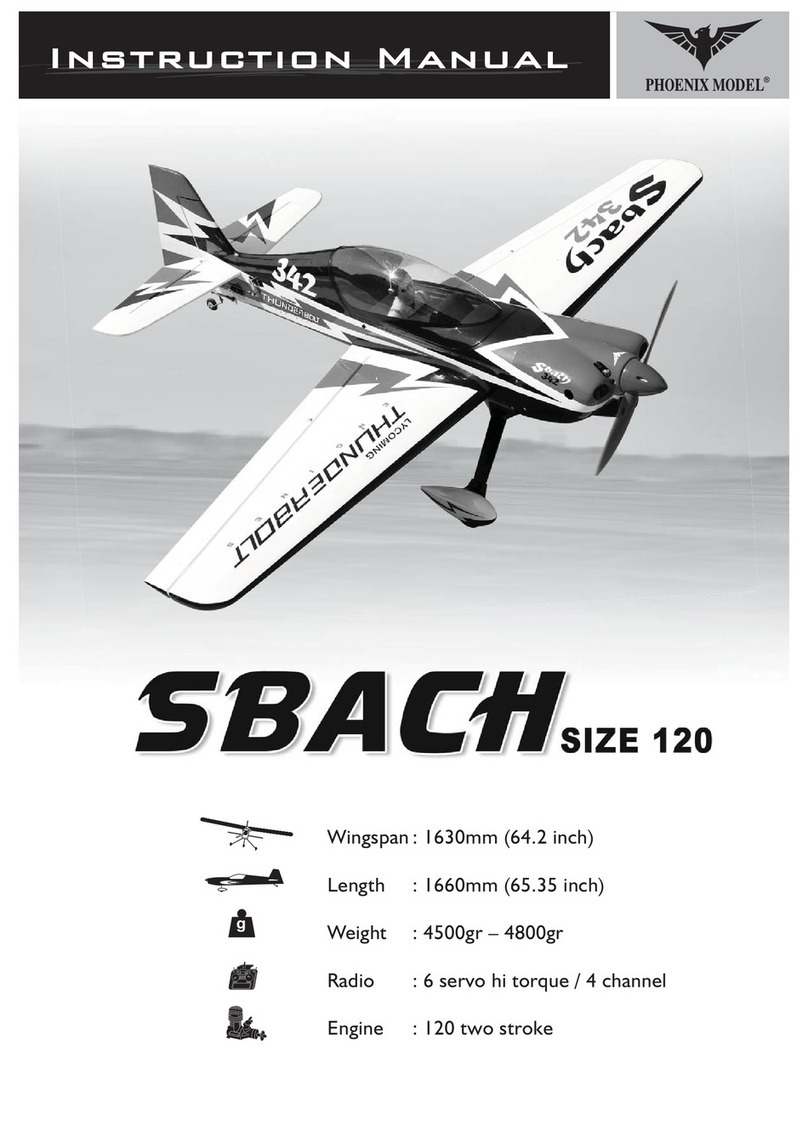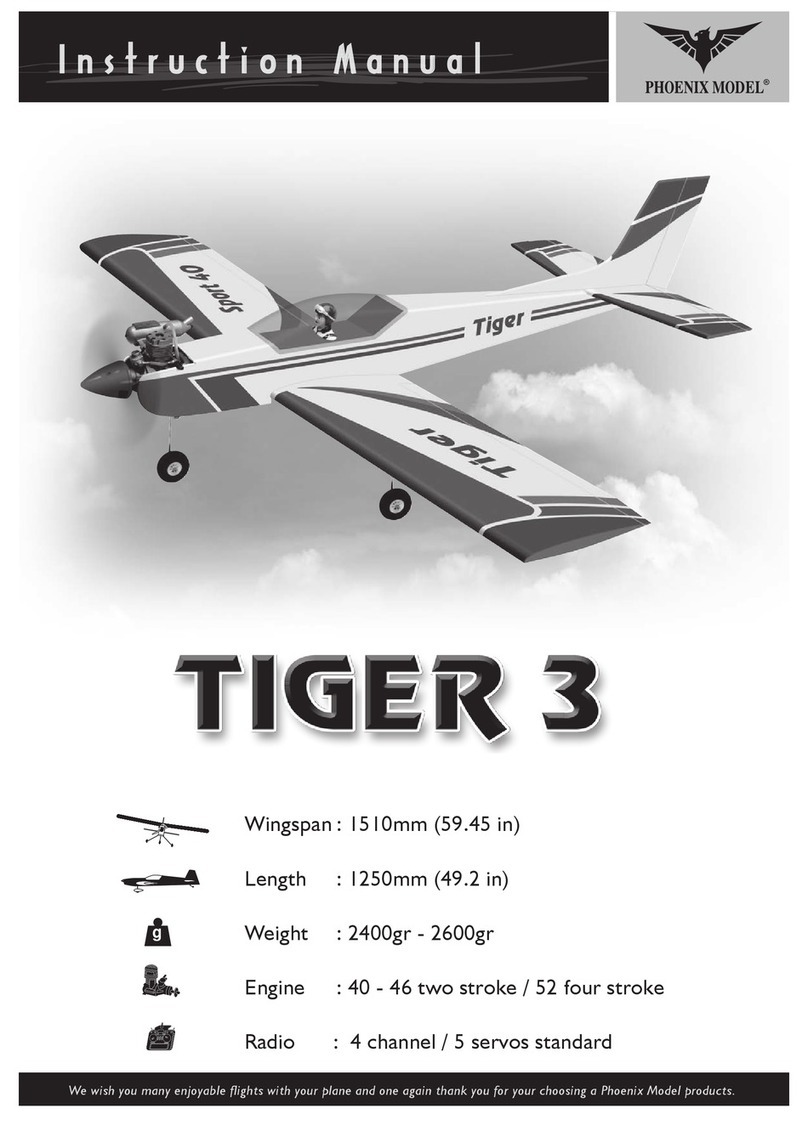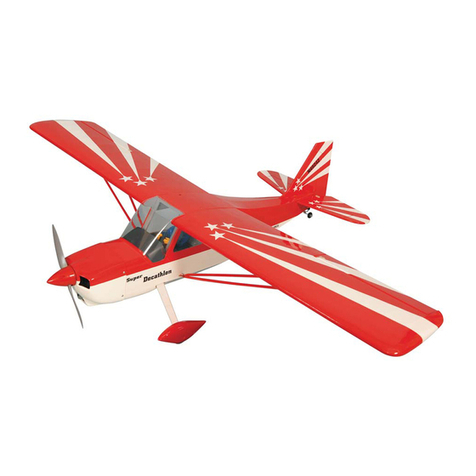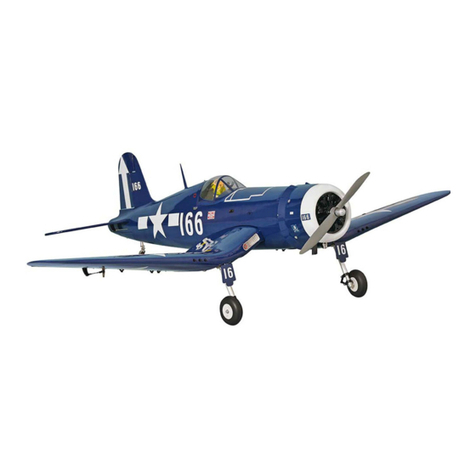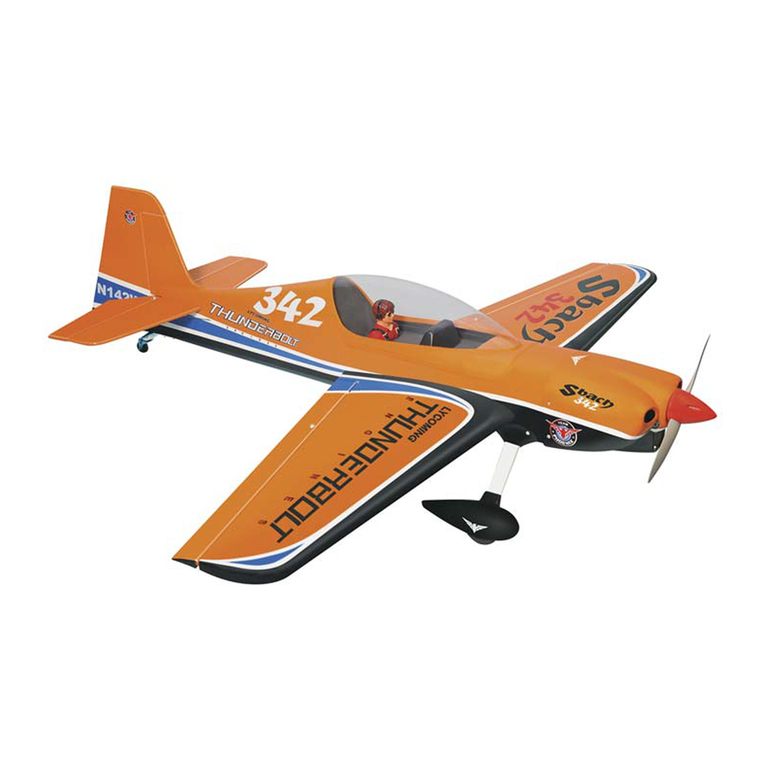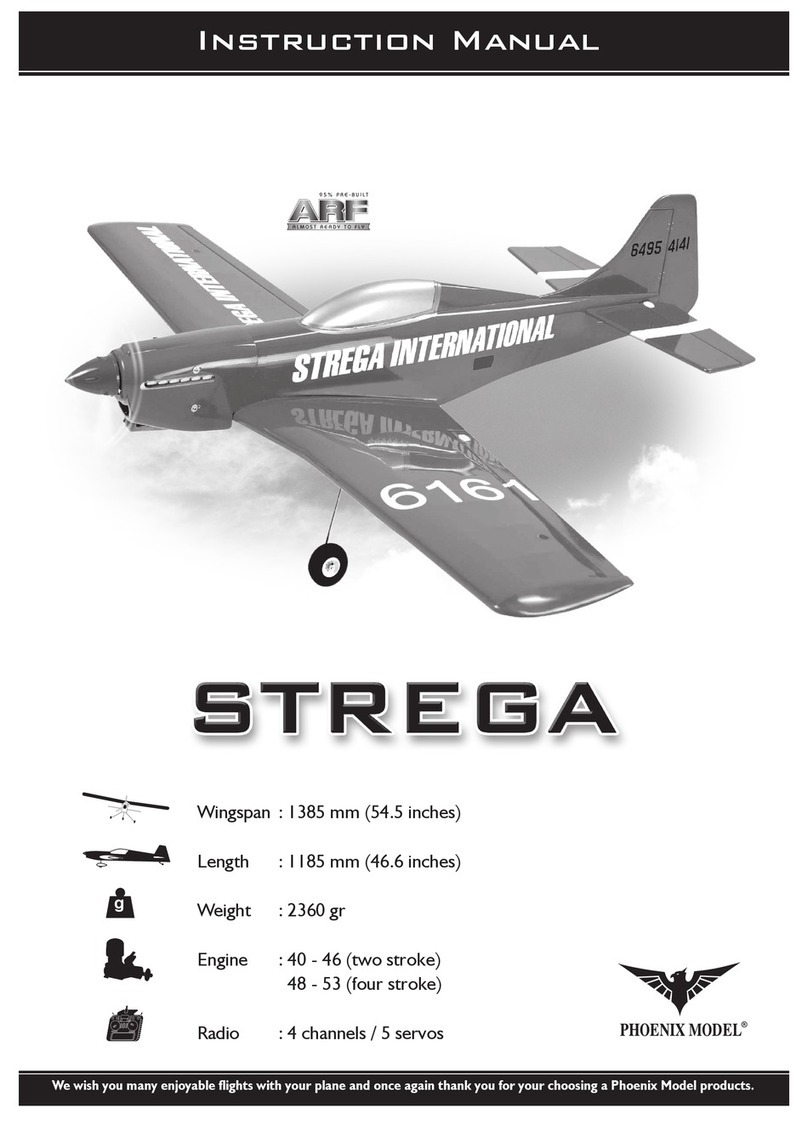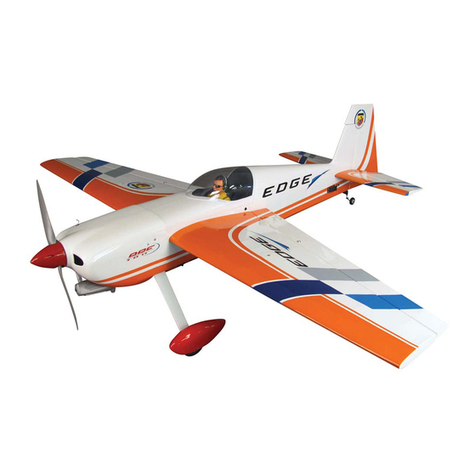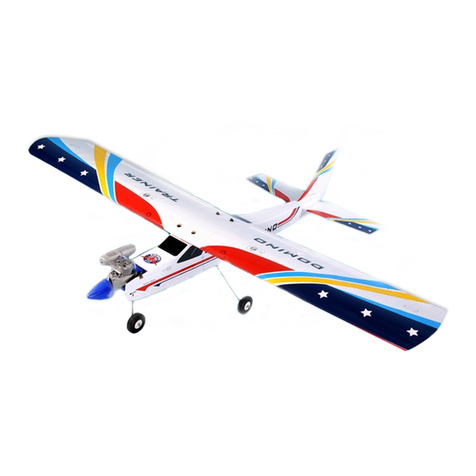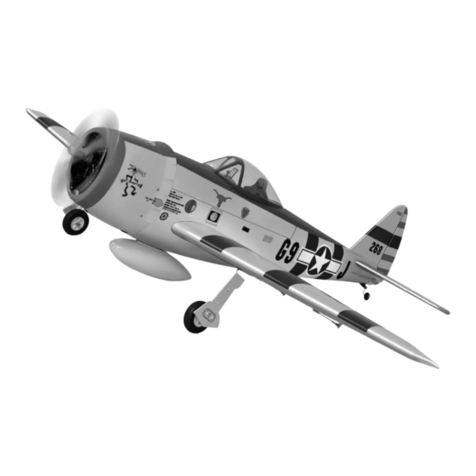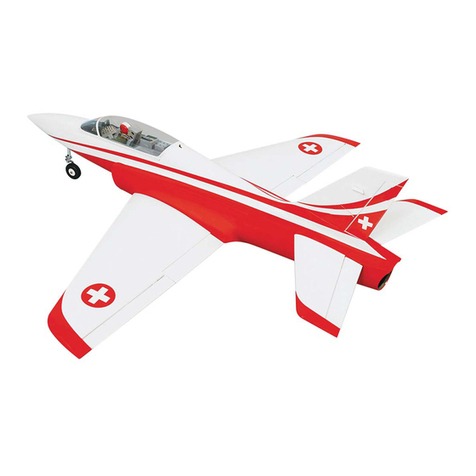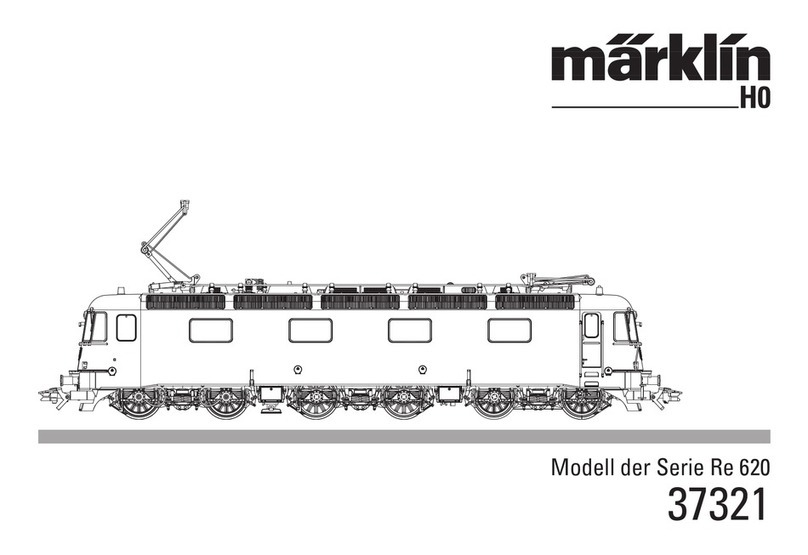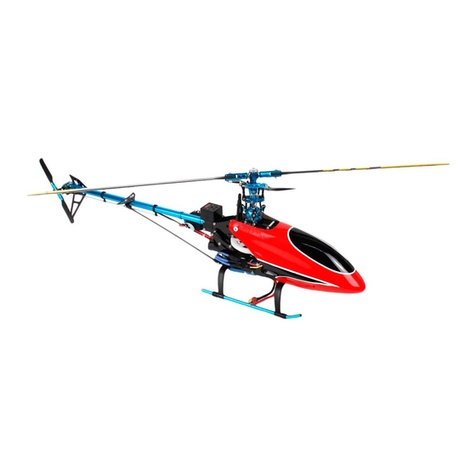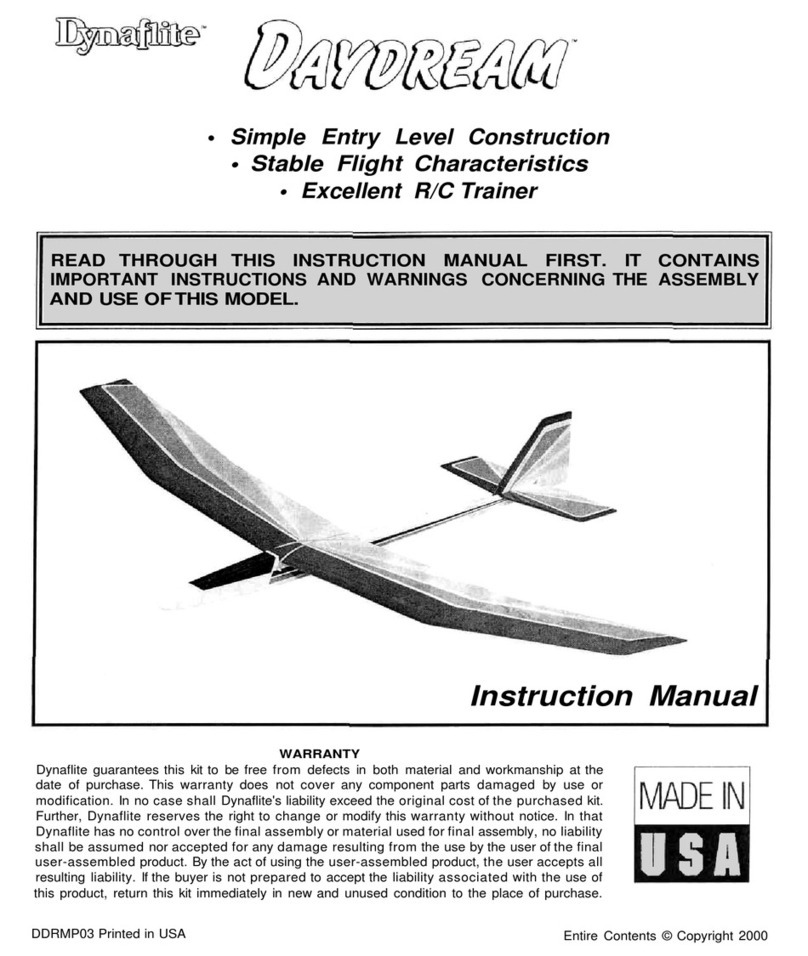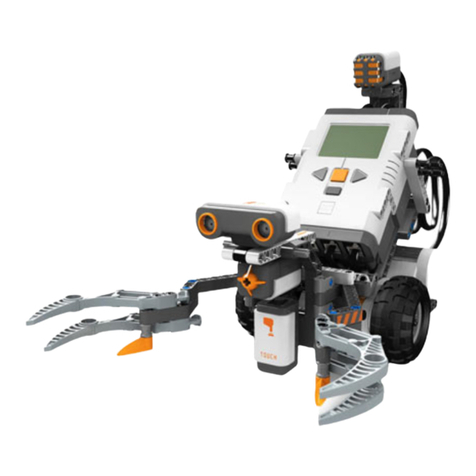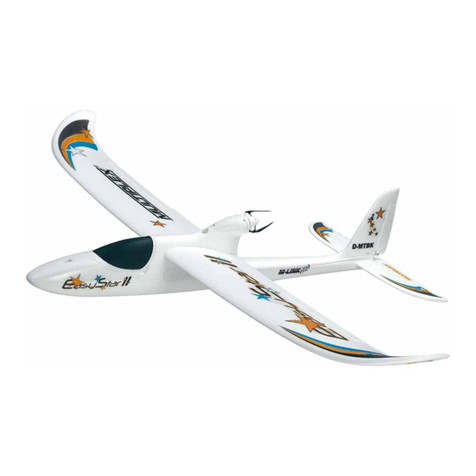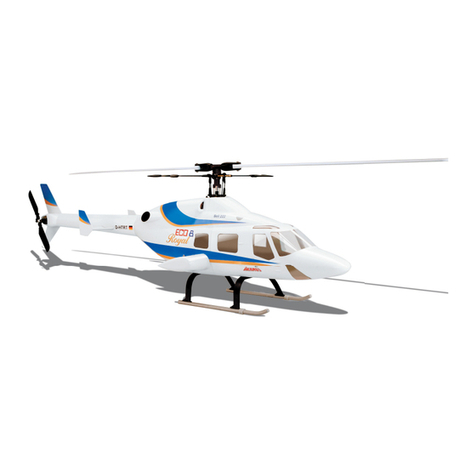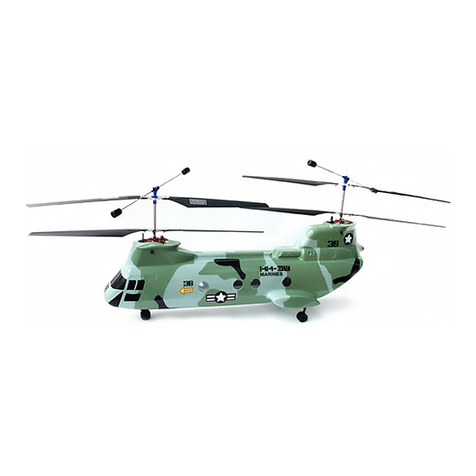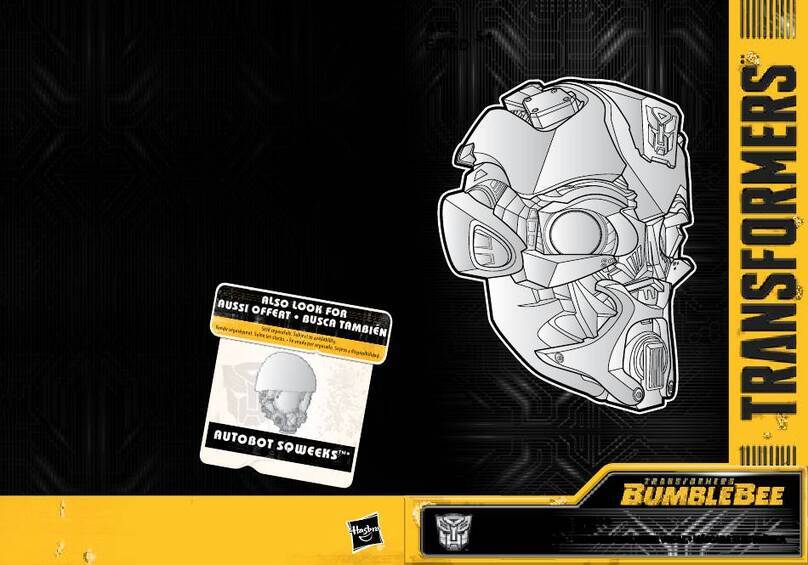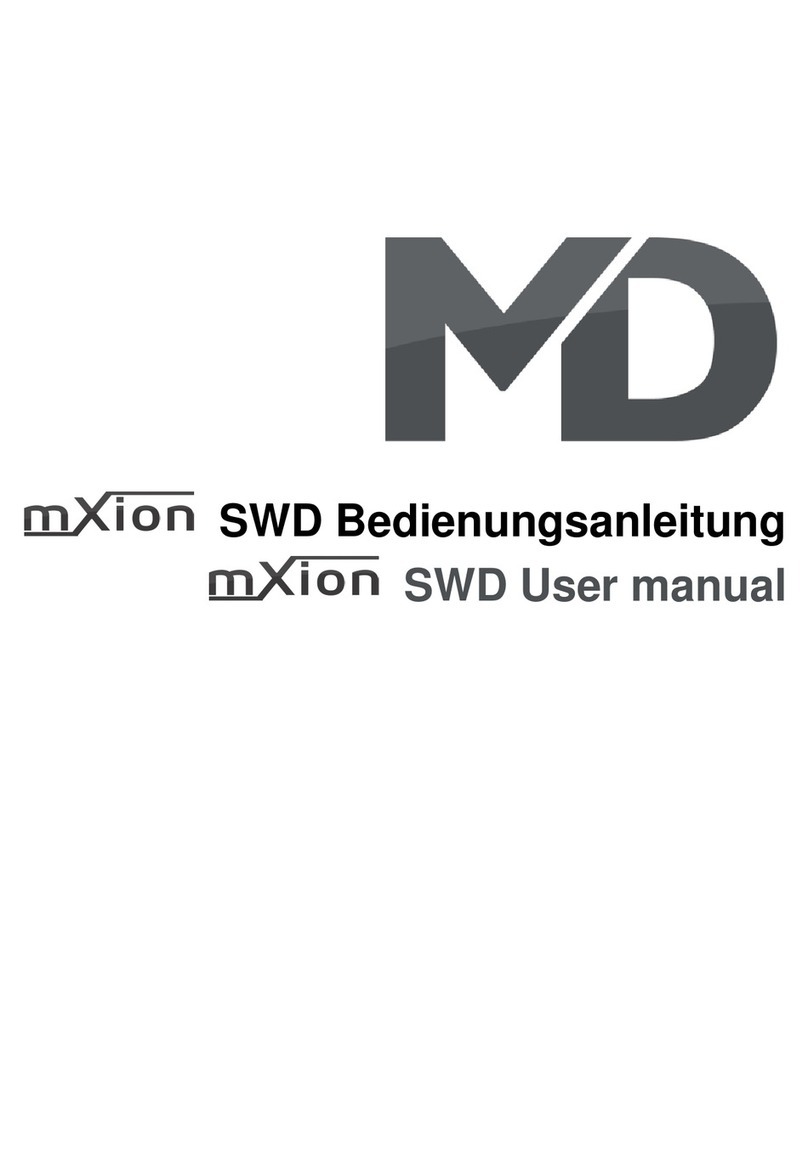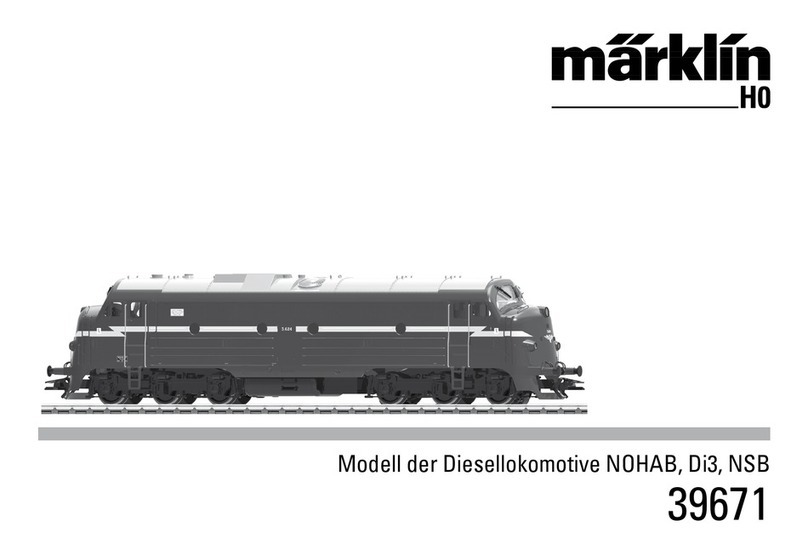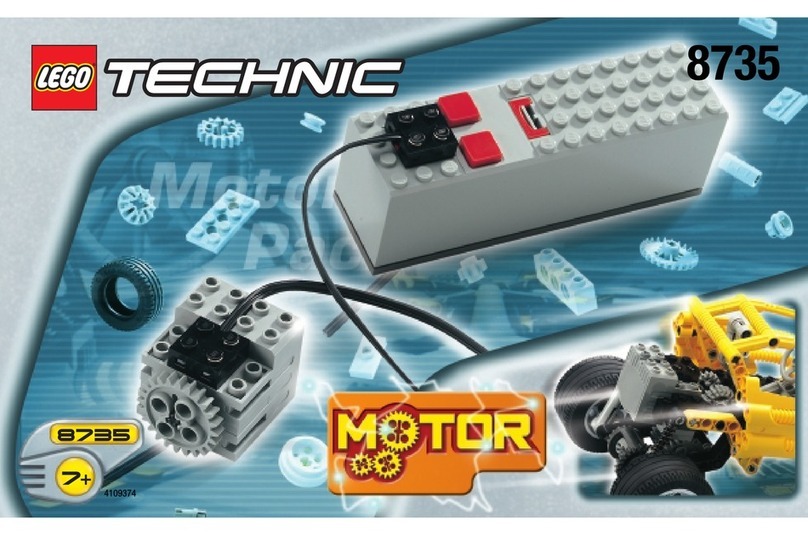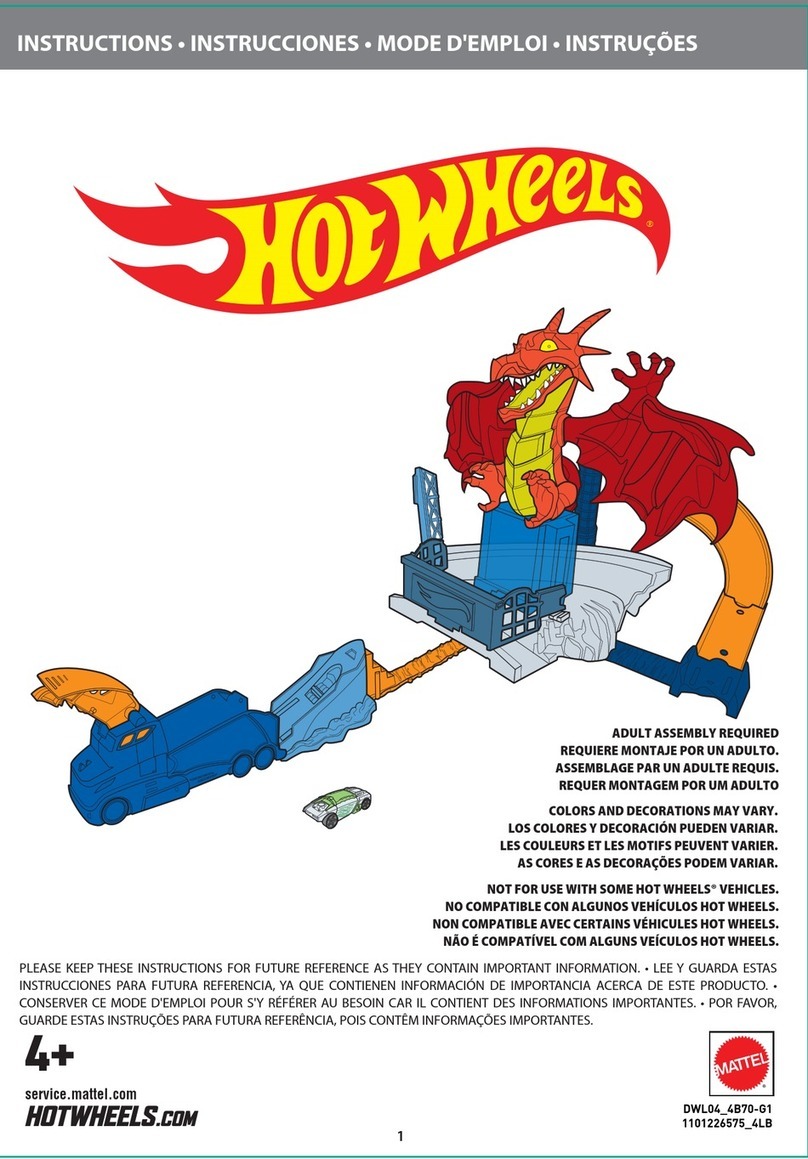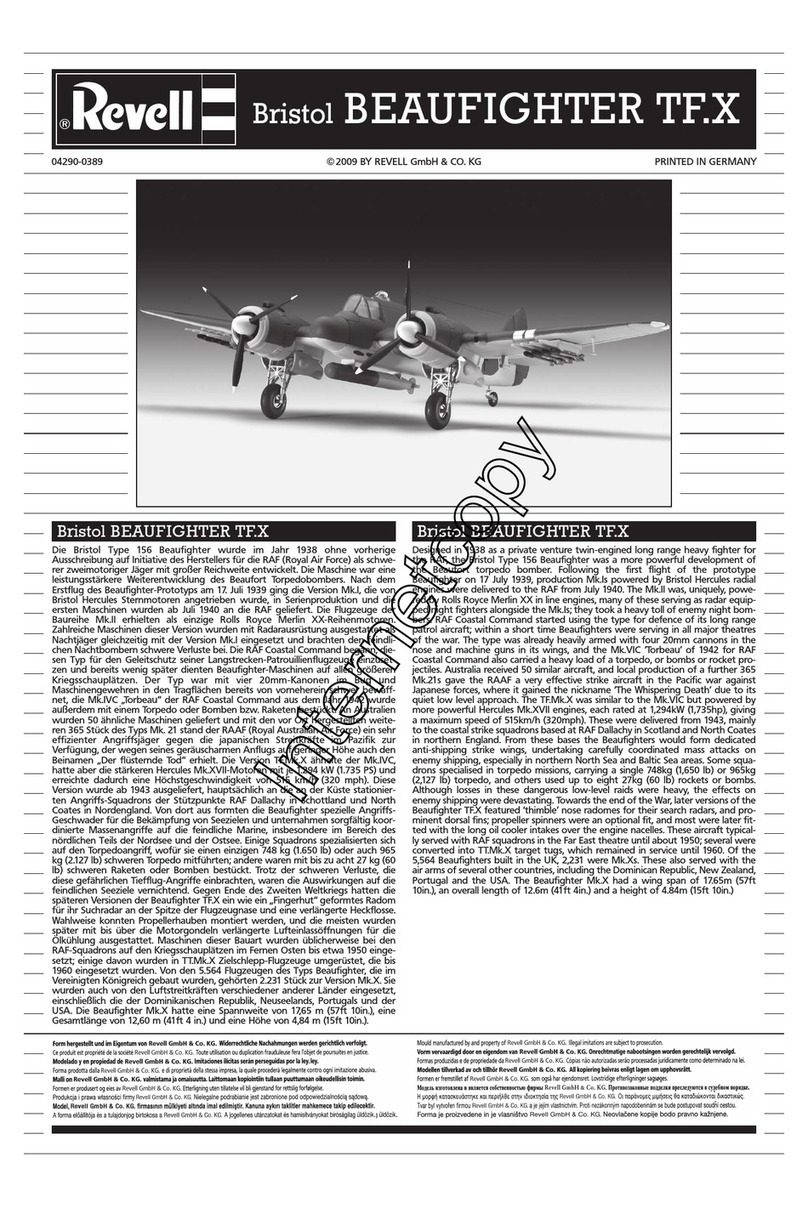2
TOOLS AND SUPPLIES NEEDED.
• Medium C/A glue
• 30 minute epoxy
• 6 minute epoxy
• Hand or electric drill
• Assorted drill bits
• Modeling knife
• Straight edge ruler
• 2 bender plier
• Wire cutters
• Masking tape
• Thread lock
• Paper towels
• Rubbing alcohol
SUGGESTION
To avoid scratching your new airplane, do not unwrap
the pieces until they are needed for assembly. Cover
your workbench with an old towel or brown paper,
both to protect the aircraft and to protect the table.
Keep a couple of jars or bowls handy to hold the
small parts after you open the bag.
NOTE:
Please trial fit all the parts. Make sure you have the
correct parts and that they fit and are aligned properly
before gluing! This will assure proper assembly. The
GENESIS is hand made from natural materials,
every plane is unique and minor adjustments may
have to be made. However, you should find the fit
superior and assembly simple.
The painted and plastic parts used in this kit are fuel
proof. However, they are not tolerant of many harsh
chemicals including the following: paint thinner, C/A
glue accelerator, C/A glue debonder and acetone. Do
not let these chemicals come in contact with the
colors on the covering and the plastic parts.
SAFETY PRECAUTION:
• This is not a toy
• Be sure that no other flyers are using your radio
frequency.
• Do not smoke near fuel
• Store fuel in a cool, dry place, away from
children and pets.
• Wear safety glasses.
• The glow plug clip must be securely attached to
the glow plug.
• Do not flip the propeller with your fingers.
• Keep loose clothing and wires away from the propeller.
• Do not start the engine if people are near. Do not
stand in line with the side of the propeller.
• Make engine adjustments from behind the propeller
only. Do not reach around the spinning propeller.
PREPARATIONS
Remove the tape and separate the ailerons
from the wing and the elevators from the stab.
Use a covering iron with a covering sock on
high heat to tighten the covering if necessary.
Apply pressure over sheeted areas to
thoroughly bond the covering to the wood.
1
INSTALLING THE AILERONS
1. Test fit the ailerons to the wing with the hinges.
If the hinges don’t remain centered, stick a pin
through the middle of the hinge to hold it in
position.
TEMPORARY PIN
TO KEEP HINGE
CENTERED
2
CA glue
2. Apply six drops of thin CA to the top and bottom
of each hinge. Do not use CA accelerator. After
the CA has fully hardened, test the hinges by
pulling on the aileron.
